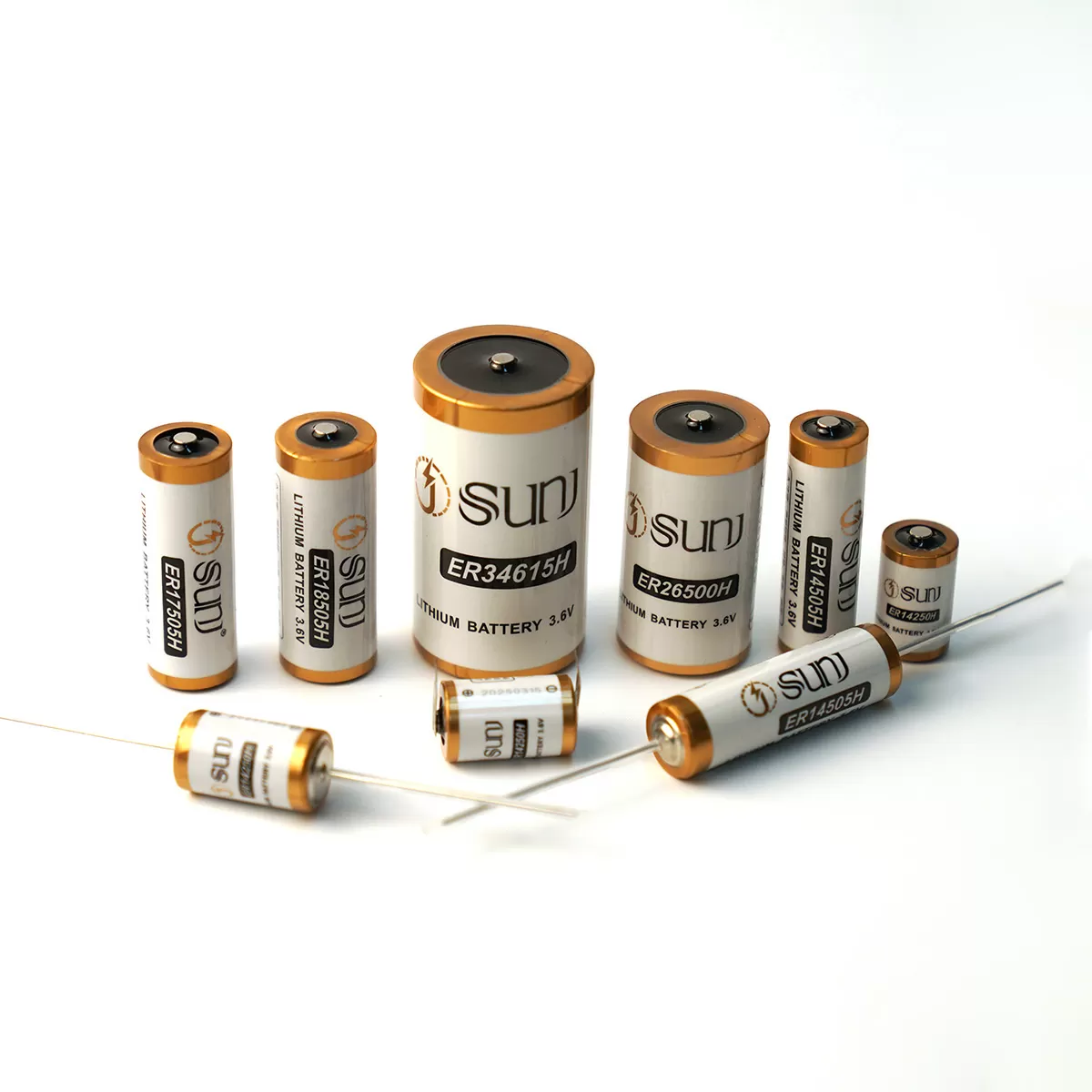Unpacking the Power: A Deep Dive into Lithium Thionyl Chloride Batteries
1. Introduction
Lithium thionyl chloride (Li‑SOCl₂) batteries are a class of primary (non-rechargeable) lithium cells that have gained traction in a wide variety of industrial and low-power applications. Thanks to their high energy density, long shelf life, and ability to perform under extreme conditions, they are becoming a go-to solution for mission-critical devices in IIoT, metering, and safety systems.
2. Lithium Thionyl Chloride Battery Specifications
Chemistry & Nominal Voltage
Li–SOCl₂ batteries use a lithium metal anode and a liquid cathode composed of thionyl chloride (SOCl₂). These cells typically have a nominal voltage of 3.6 V, considerably higher than many other primary lithium chemistries.
Energy Density & Capacity
One of their standout features is a very high energy density. Depending on the model, energy density can reach up to 650–710 Wh/kg.
For example, a C-size Li-SOCl₂ cell may deliver multiple ampere-hours, depending on discharge conditions.
Self‑Discharge Rate & Shelf Life
These batteries have an extremely low self-discharge rate — often less than 1% per year.
Thanks to that, they can remain in storage for 10–20 years with minimal capacity loss.
Temperature Range & Discharge Behavior
Li-SOCl₂ batteries are engineered to operate in very wide temperature ranges. Many cells support –55 °C to +85 °C, and some specialized versions go even higher.
At very low temperatures, these batteries can maintain a stable voltage, thanks to their chemistry.
Construction & Form Factors
They are commonly built in a bobbin-type construction, which offers stable performance over long periods.
In terms of size, they range from half-AA (½ AA) to D-cells, depending on manufacturer.
Current Capability
These cells are optimized for low-current, long-duration applications. Their internal resistance is relatively high, which makes them less suited for very high pulse loads.
Still, some models support moderate pulses: for instance, a C-size cell might support up to ~300 mA pulses under certain conditions.
3. Applications of Lithium Thionyl Chloride Batteries
Industrial Sensors & IIoT
Li-SOCl₂ batteries are frequently used in remote sensors (temperature, vibration, etc.), especially in the context of Industrial Internet of Things (IIoT) deployments. Their long life, low self-discharge, and ability to operate in harsh environments make them ideal for devices that must run maintenance-free for years.
Metering Systems
They are widely used in automated meter reading (AMR) systems for utilities — such as electrical meters, gas meters, water meters, and heat meters.
Security / Alarm Systems & Backup Memory
These batteries power security systems, alarm devices, and act as backup power for memory ICs or real-time clocks.
Emergency / Beacon Devices
Li-SOCl₂ cells are often used in emergency beacons, ELTs (Emergency Locator Transmitters), and other safety devices that must be reliable over many years.
Specialized Applications
They also serve in industrial telemetry, tracking systems, and other professional electronics where long-term, maintenance-free power is critical.
Some example products include:
Compact AA or ½ AA cells for low-power devices
C-size cells for higher capacity needs
D-size cells for ultra-long deployments
Smaller formats for compact IIoT devices
4. How to Safely Handle Lithium Thionyl Chloride Batteries
Storage Best Practices
Store in a cool, dry place to minimize self-discharge.
Avoid storing at very high temperatures.
Use original packaging to protect terminals.
Handling Precautions
Never apply reverse current: These are primary cells — trying to charge them can be dangerous.
Avoid mechanical damage: Do not puncture or crush the cell. The electrolyte (thionyl chloride) is toxic and corrosive.
No high-current discharge beyond spec: Ensure that you are within manufacturer’s recommended load profiles to avoid damaging the battery or reducing its lifespan.
Disposal and Recycling
Do not incinerate: combustion can release toxic gases.
Contact certified battery recycling centers.
Follow local regulations for safe disposal.
Hazard Considerations
Related links:7 Reasons Lithium Thionyl Chloride Batteries Power Industrial Automation (Reliable, Long-Life)
Thionyl chloride is corrosive. In case of a breach, handle with appropriate protective equipment.
Treat these batteries with care, similar to handling hazardous chemicals.
5. Environmental Impacts of Lithium Thionyl Chloride Batteries
Toxic Electrolyte
Thionyl chloride is a highly reactive and toxic compound. Improper disposal or cell rupture poses chemical hazards.
Lifecycle Advantages
On the positive side, their extremely long shelf life and low self-discharge reduce the frequency of replacement, which can mitigate waste over time.
Recycling Practices
Recycling is more complex than standard lithium-ion due to the chemical hazard, but proper facilities can neutralize or recycle components.
Comparison with Other Lithium Chemistries
Compared to rechargeable lithium-ion, Li-SOCl₂ does not involve repeated charge/discharge cycles, reducing the risk of thermal runaway. However, the toxic electrolyte and recycling challenges are trade-offs to consider.
6. Lithium Thionyl Chloride Battery Lifespan
Calendar Life (Shelf Life)
Typical shelf life is 10–20 years, thanks to self-discharge rates below 1% annually.
Cycle Life
Since these are primary (non-rechargeable) cells, “cycle life” in the traditional sense does not apply. Lifespan is determined by total energy delivered and how the battery is used (constant low load vs. pulses).
Factors Affecting Lifespan
Temperature: High or low extremes may degrade capacity over time.
Load profile: Continuous low current is ideal; heavy pulsed loads should be carefully designed.
Storage conditions: Proper storage prolongs useful life.
Real-World Example
Industrial-grade Li-SOCl₂ batteries can deliver over 10 years of reliable operation in IIoT devices, even under demanding conditions.
7. Case Study / Example Products
Compact AA or ½ AA cells for low-power electronics and memory backup.
C-size cells for higher capacity and longer-duration deployments.
D-size cells for ultra-long-term applications in remote systems.
Smaller formats for compact IIoT or sensor devices requiring decades-long shelf life.
8. Conclusion
Lithium thionyl chloride batteries provide high, stable voltage, superior energy density, and exceptional longevity, even in extreme conditions.
Best Uses:
Devices with very low, continuous power draw
Applications where battery replacement is costly or difficult
Extreme environments (low/high temperature)
Systems requiring decades-long shelf life
Limitations:
High-drain pulse applications (unless paired with a capacitor)
Rechargeable requirements
Environments with limited recycling infrastructure
For industrial and IIoT applications requiring reliable, long-term energy, Li‑SOCl₂ batteries remain a leading solution.



